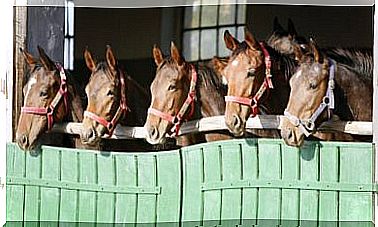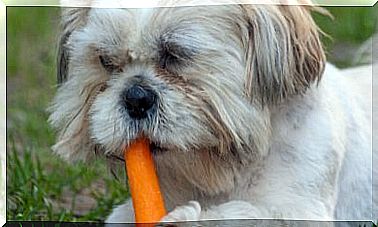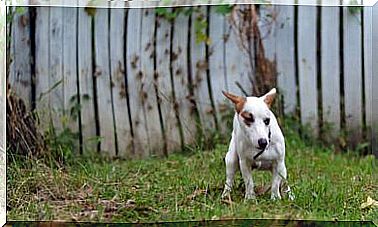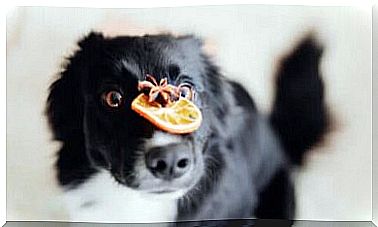Plants For Your Rabbit: Which Are Suitable Feeds?

Many of the fruits and vegetables that humans eat are also suitable plants for your rabbit. Parts of fruits or vegetables can be good for a balanced diet and should have a permanent place in it.
Some plants for your rabbit are readily available as they are also part of the human diet. However, it is important to find out beforehand because not all plants are suitable for our rabbits.
Plants for your rabbit
Roots, such as carrots, parsnips, turnips or beetroot, are plants for your rabbit that provide energy because they contain a lot of sugar. Therefore, they should only make up a small part of his diet.
Sticks such as celery, Swiss chard, broccoli and the green parts of other vegetables are ideal plants for your rabbit. They are low in calories but high in fiber.
Leaves such as cabbage, spinach, broccoli or carrot leaves, kale, leaves of berries such as raspberries or strawberries, salad and radish leaves are just a few examples of how you can feed your rabbit healthily.
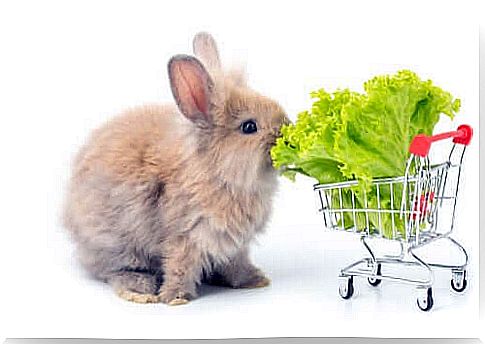
Most of the seeds and grains that we humans eat are not toxic to rabbits, but they are high in energy and it is not advisable to feed them in large portions. Keep in mind that rabbits feed mostly on leaves rather than grains.
Herbs that we recommend as plants for your rabbit are parsley, peppermint, basil, rosemary, thyme, sage, fennel and coriander. These are healthy treats for your rodent.
You can even grow them yourself in flower pots so you always have some fresh and tasty plants ready for your rabbit.
But please also note that some plants are quite poisonous and some parts of other plants. A rabbit can eat tomatoes, but the leaves of the plant are poisonous to the rodents.
Diet with vegetables
Aside from the vegetables that you can share with your rabbit, they will also often eat the parts that humans throw away because they are tough and fibrous. But that’s exactly what the rabbits love about them.
These include the leaves of cauliflower, broccoli gel, and carrot leaves.
In the supermarket, the leaves are often removed before the vegetables are displayed for sale. However, you can get them at the market or health food store and your rabbit will thank you!
Wild plants for your rabbit
Many wild plants for your rabbit will grow as weeds in the garden. They’re an ideal, free supplement to your diet. Sycamore, clover, dandelion, thistle, chickweed, nettle, blackberry leaves and shepherd’s purse are just a few examples.
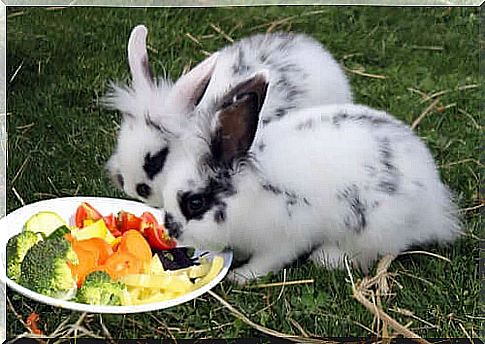
A good book on the subject is essential here, however, as some weeds could be poisonous for your bumblebee.
Also, make sure to only pick herbs that don’t grow on the side of the road so that they aren’t poisoned by pollution and pollutants.
Dry plants for your rabbit
In dry plants, both the water and nutrient content is reduced, but the sugar content is greatly increased. This means that dried fruits and vegetables contain more calories. The small rodents should only get dried fruit very rarely.
However, since leaves are low in sugar, you can feed them a mixture of both. Mixing dry leaves with hay will satisfy gourmets and rabbits too.
Introduction of fresh food
Rabbits are very sensitive to sudden changes in their diet. If you give them a lot of fresh food all at once, it can affect their digestion and make them sick.
It’s better to feed new foods slowly and in small quantities so that you can quickly find out whether or not they are good for them.
It is particularly important for young animals to change their diet slowly, as they are particularly sensitive. Some older books say there is no need to withhold fresh food from them, as ideally they will get used to it right after weaning.
If you adopt a baby rabbit who is eight weeks or older and has no fresh food, give him some time to get used to his new environment before gradually offering him small portions of fresh food, as you would with one adult animal would do.
